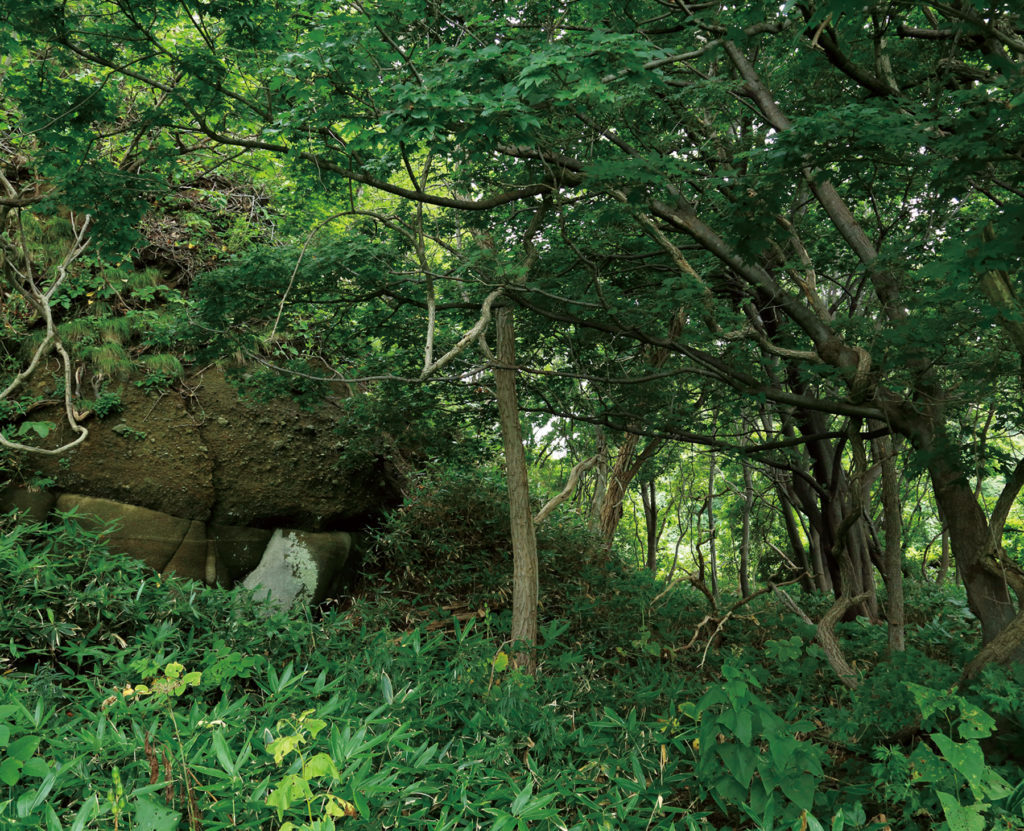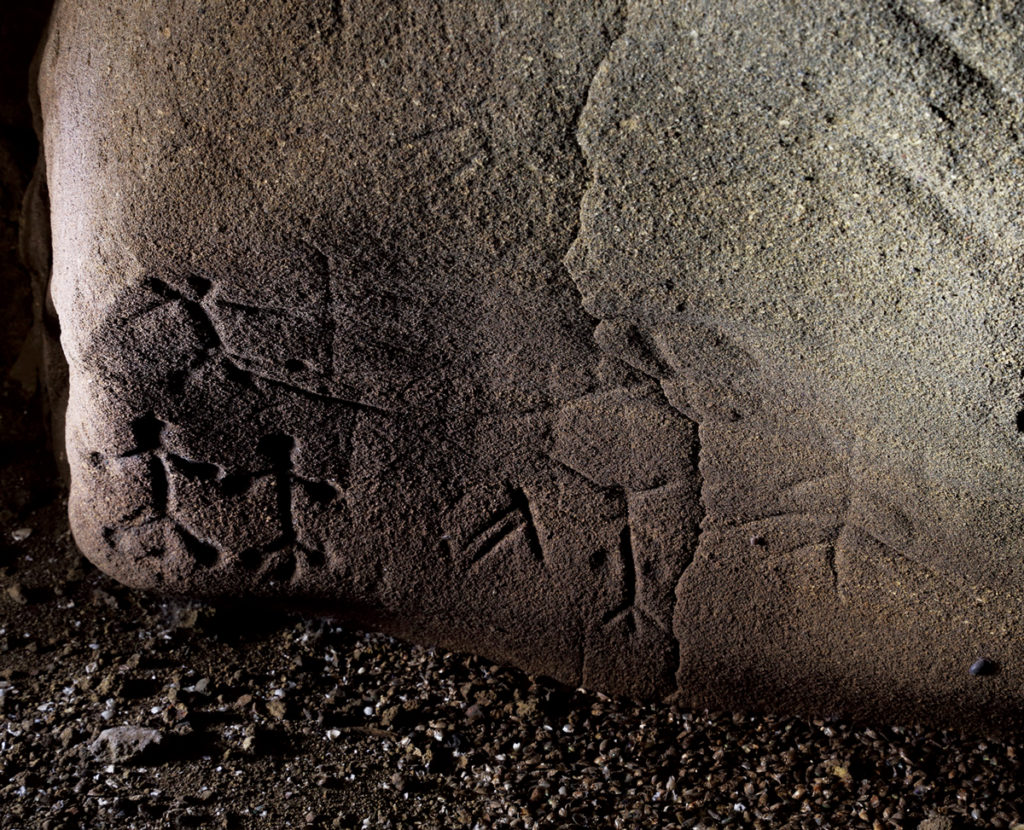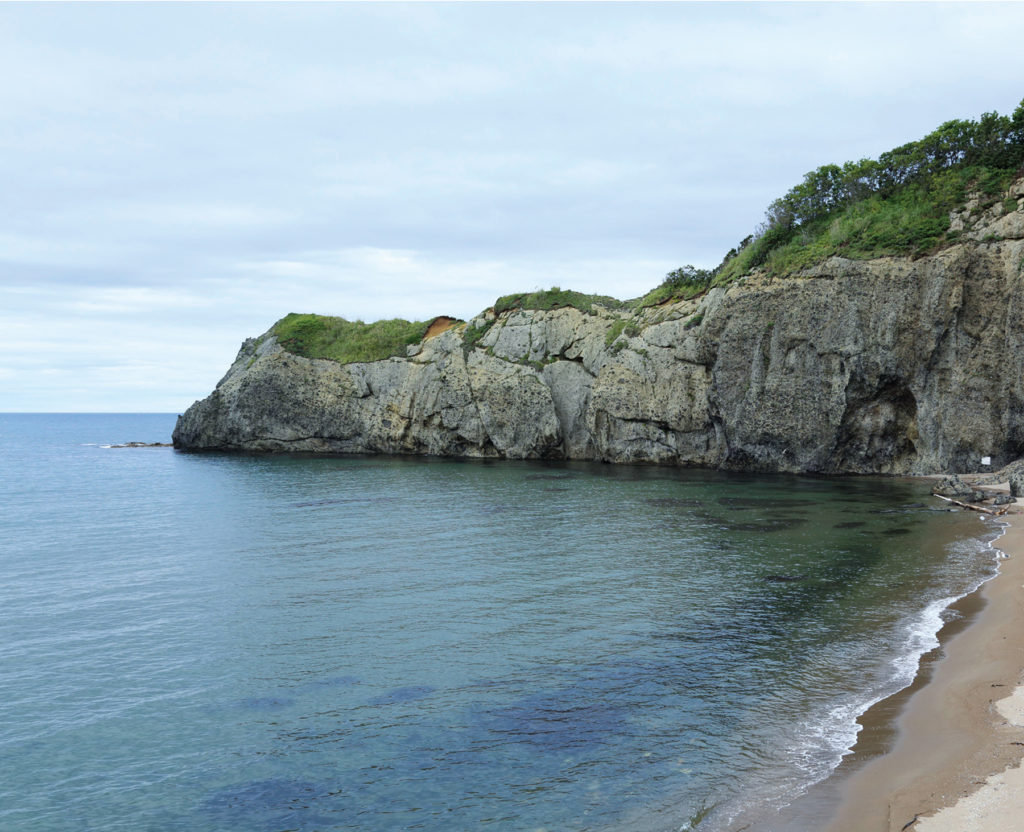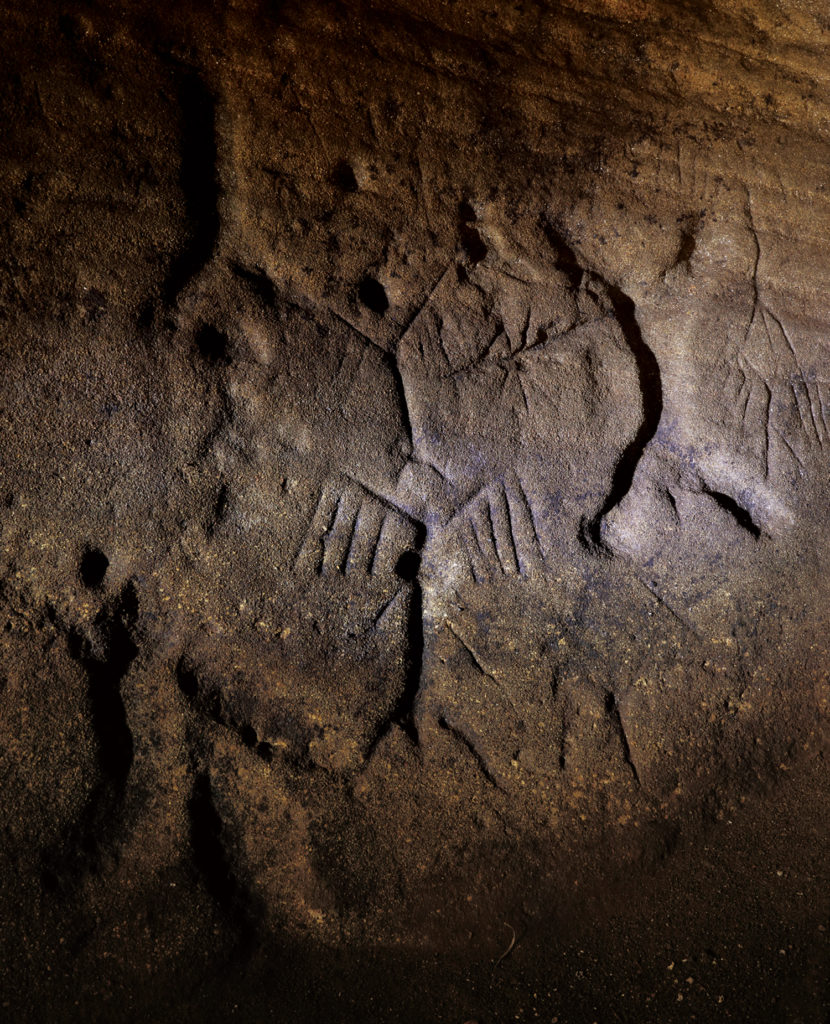Petroglyphs Awakened from the Darkness
The summer had gone and a chill was already in the early September air when I visited Fugoppe Cave, a rock shelter at the base of the Shakotan Peninsula believed to date back to the Epi-Jomon (2,500–1,400 years ago). Japanese prehistory diverged after the Jomon period. While the advent of agriculture ushered in the Yayoi period on mainland Honshu, the hunter–gatherer culture continued to flourish in the northern most island of Hokkaido.
I first learned about Fugoppe Cave around the time I graduated from university, when I picked up a secondhand book titled the “Mysterious Petroglyphs of Fugoppe Cave” (Nazo no kokuga Fugoppe dokutsu; Rokko Shuppan). The impact of that moment is still clear in my mind. A middle schooler chanced upon some potsherds, and this led to the excavation of the cave and the discovery of the petroglyphs that had been buried and resting underground for a good two millennia. The photographs sent shivers down my spine, especially those of human figures carved on the rock walls. Looking back, I was still a stranger to the realm of darkness and hesitated to organize my own photo shoot there at the time. The opportunity presented itself only 15 years later, now that I have had more experience in fieldwork.

The entrance to Fugoppe Cave was not far from the coastline. From a distance, I could make out the hillock covered with thickets. Up close, a large rock face appeared inside the thickets. This was where those petroglyphs were found—I recalled the photographs and they rekindled my imagination. Ever since excavations in the 1950s turned up over 800 petroglyphs, other relics like potsherds and animal bones have also been unearthed. To preserve the petroglyphs against changes in temperature and humidity caused by the removal of soil, protective glass cubicles are now installed for visitors to stand in and peer out at the cave interior. On this day, however, I received special permission to set up my camera outside the cubicles and shoot the cave interior directly. That is, my photographs come close to capturing the reflection in the eyes of the people who spent their time here long ago. My guide, Mr. Ogawa, a curator , said the process of digging was called off midway for safety reasons, and there may be more petroglyphs deeper down. Having learned that yet untouched petroglyphs remain underground, I was even more enchanted by Fugoppe Cave, this home to the unknown.
As I scanned the wall surface and studied the images, I found some deep carvings of human figures that appeared to be costumed in horns and wings. They reminded me of a trip I once took to a small village in northern Mongolia, which still had no access to electricity or water. I spent the night of a full moon with a shaman and observed one of her rituals. The shaman covered her face with a braided cloth mask with bird feathers attached to the head. She sprinkled goat milk up to the sky and struck up a conversation with the lake. Eventually, she stood up from her seat on the rock, made violent vertical movements with her body, beat her drum made from animal skin, and started dancing. Whether my experience on that day and the mysterious petroglyphs of Fugoppe Cave are related, I am not sure. But it seemed to me as if several human figures in the petroglyphs were dancing for a purpose.

To unravel the mystery of Fugoppe Cave, it might be a good idea to continue examining and interpreting each and every petroglyph, and at the same time, to take a fresh look at the bigger picture, including sites in the surrounding area dating back to the Late Jomon (4,400–3,200 years ago) and the Epi-Jomon, and to rethink the role played by the realm of darkness. Migratory birds are clever enough to travel between continents to islands. We humans might also have connected with one another across incredible distances beyond our imagination.

<PAPERSKY no.49(2015)>

Jomon Fieldwork | Nao Tsuda × Lucas B.B. Interview
A conversation between ‘Jomon Fieldwork’ Photographer and writer Nao Tsuda and Papersky’s Editor-in-chief Lucas B.B. The two discuss the ways Jomon culture continues to play an important role in modern day Japan. The video was filmed at Papersky’s office in Shibuya in conjunction with Tsuda’s exhibition “Eyes of the Lake and Mother Mountain Plate” held at the Yatsugatake Museum in Nagano.
Nao Tsuda | Photographer
Through his world travels he has been pointing his lens both into the ancient past and towards the future to translate the story of people and their natural world.
tsudanao.com











